Medical billingcollections is crucial for the financial health of your business. It might seem easy to bill someone, but getting them to pay can be hard. Timely and accurate collections are important for both insurance companies and patients because they keep cash flowing and stop financial bottlenecks. In this article, we’ll talk about how important it is to collect medical bills, what metrics you should keep an eye on, and how to make your collections process better.
What Do Gross and Net Collections Mean in Medical Billing?
Total Medical Billing Collections
Gross collections are the total amount you charge for services before any changes are made. You can consider it to be the “price tag” for your services. But gross collections don’t show how much money you really get. They only show what you charged.
The formula for the Gross Collections Rate is
Gross Collections Rate = Total Payments Collected. Total Charges Billed × 100\frac {\text{Total Payments Collected}}{\text{Total Charges Billed}} \times 100 Total Charges Billed Total Payments Collected×100
Net collections show how much money you really get after writing off debts, denying claims, and patients not paying. This is the real way to figure out how much money your practice makes.
The formula for the Net Collections Rate is:
Net Collections Rate (%) = Total Payments Collected Total Collectible 100\frac{\text{Total Payments Collected}}{\text{Total Collectible Amount}} \times 100 Total Collectible Amount Total Payments Collected×100
The Total Collectible Amount is equal to the Total Charges Billed minus the Contractual Adjustments.
Why Net Collections Are More Important
Gross collections can look good, but they can also be misleading. You could charge millions but only get a small part of it. It’s much more important to know how well your practice is collecting payments than how much you billed.
Important Numbers in Medical Billing Collections
Collection Rate
This is an important number to keep an eye on for the health of your billing as a whole. The collection rate shows you how much of the amount you billed is actually collected. A good net collection rate (usually 95% or higher) shows that your practice is running smoothly.
Rate of Acceptance for First-Pass Claims
This number shows how many of your claims are accepted the first time without needing any changes or follow-up. At least 98% is best because it cuts down on delays and extra work.
Days in Accounts Receivable (A/R)
This metric shows how long it takes to be paid. Try to keep your A/R periods to less than 30–35 days, since longer ones tie up cash flow.
Rate of Denial
The best denial rate is less than 5%. Higher rates could mean that there are problems with coding, documentation, or how the payer acts.
Collection Rate for Patient Responsibility
If you want to improve your overall revenue, you should try to collect 70–80% of patient balances within 90 days.
Problems with Collecting Medical Bills
High Rates of Denial
Denials make it hard to get money. If your team doesn’t deal with denials quickly or correctly, you lose money. It is very important to have a denial management process that works well.
Filing Late
When you file a claim, insurance companies give you very short deadlines. If you miss a deadline, even by a day, you might lose your right to get paid. Filing on time is necessary to get paid.
Bad Paperwork
Coding mistakes that cause claims to be denied are often caused by patient records that are wrong or missing information. Keeping accurate records is very important for avoiding problems with medical billing.
Weak Collections from Patients
Not collecting co-pays and unpaid patient balances can have a big effect on net collections. This problem can be avoided by having clear rules for how patients should pay and how to follow up.
Posting Payments in a Way That Doesn’t Work
If payments are posted wrong, it can be hard to figure out where the money is coming from or why sales are down. For collections to get better, posting must be done correctly.
Ways to Improve Medical Billing Collections
1. Quick and Easy Submission and Follow-Up of Claims
As soon as the service is done, send in your claims. Make sure you send them to the right payer and follow up quickly on claims that were denied.
2. Using technology
Use medical billing software to make things like tracking claims, posting payments, and reporting easier. This cuts down on mistakes made by people and speeds up collections.
3. Talk to Patients Clearly
Make sure patients know what their financial obligations are. Let them know about co-pays or unpaid bills as soon as possible, and send reminders on time. Offering payment plans or financing options can also help you get more money.
4. Training for Staff
Make sure your staff is well-trained in medical billing collections and coding to cut down on mistakes and boost collection rates. They should also know what payers want and follow up quickly on any denials.
5. Keep an Eye on Metrics Often
Keep an eye on your collection rates, denial rates, and other important numbers on a regular basis. This will help you find parts of your billing process that need to be better.
Common Mistakes That Hurt Medical Billing Collections
1. Bad Documentation
Claims can be denied if the paperwork is not complete or is wrong. Make sure that all of the records are complete and correct.
2. Posting Payments in a Way That Doesn’t Work
Incorrectly posting payments can cause confusion and lost income. Make sure that payments are recorded correctly and matched with the right claims.
3. Too Many Write-Offs
Don’t write off too much, especially if it’s because of mistakes or missed authorizations. Keeping track of these mistakes and fixing them can help you collect more money.
In Conclusion Of Medical Billing Collections
Collections for medical billing are crucial for the financial health of your practice. Even though gross collections may look good, net collections show you how your practice’s finances really are. You can greatly raise your collections rate by keeping an eye on important metrics, streamlining your billing procedures, and fixing common problems like high denial rates or bad paperwork.
Using technology and professional billing companies, as well as following best practices in billing, can help you get more money and keep your cash flow healthy. Focusing on net collections will help your practice manage its revenue cycle better and stay financially stable.


